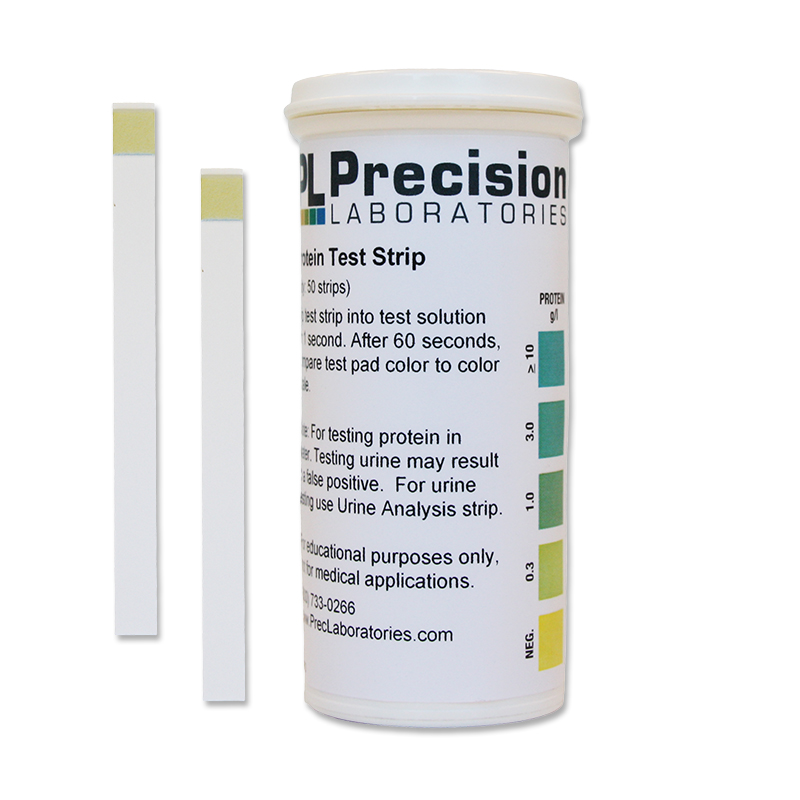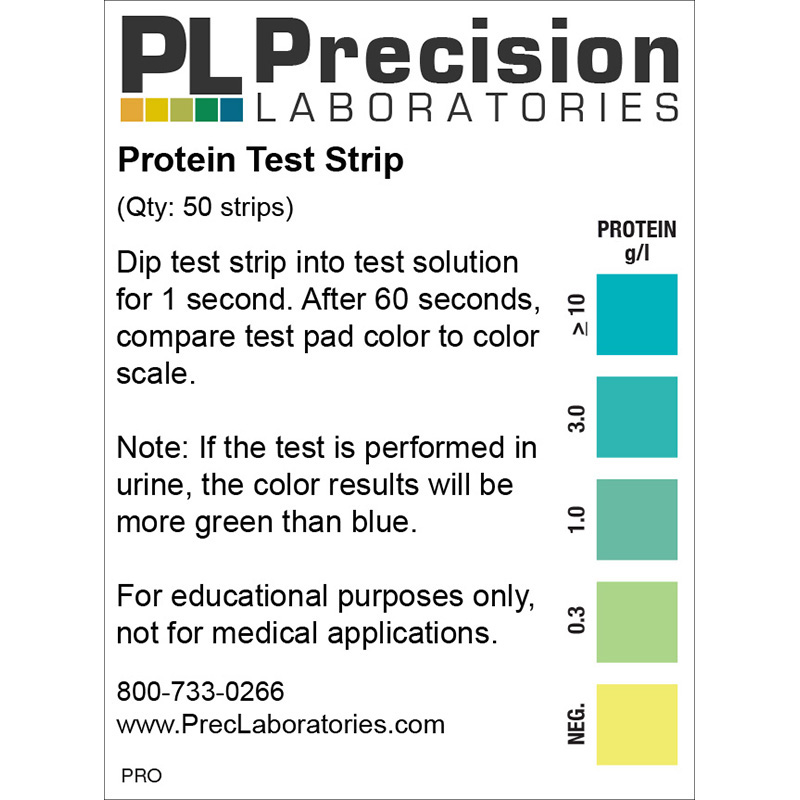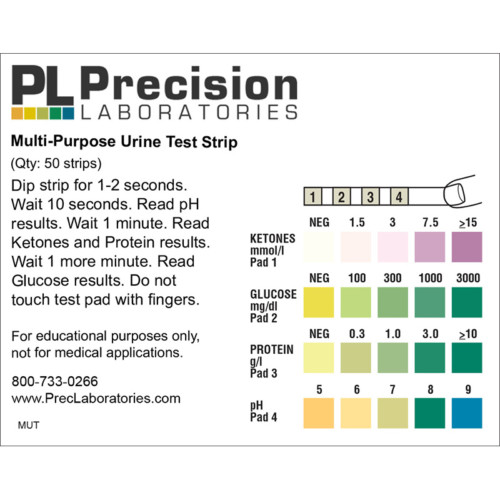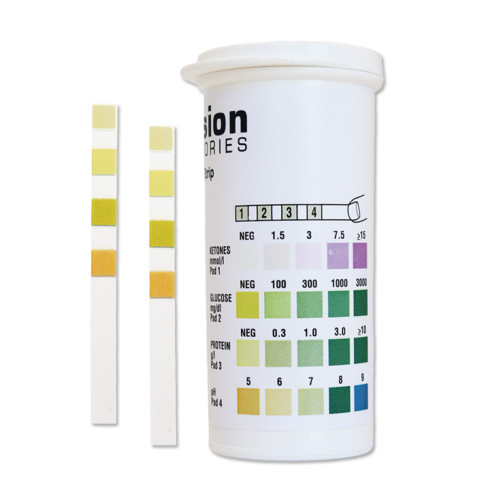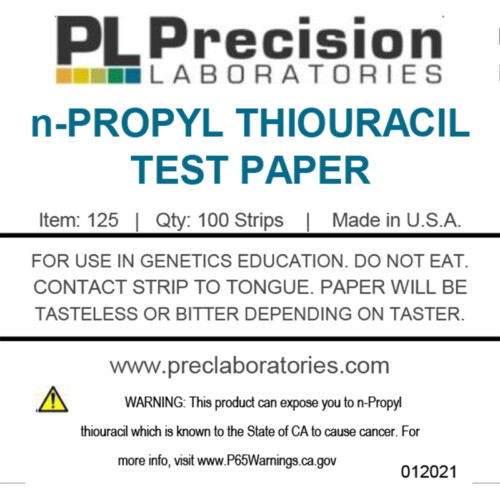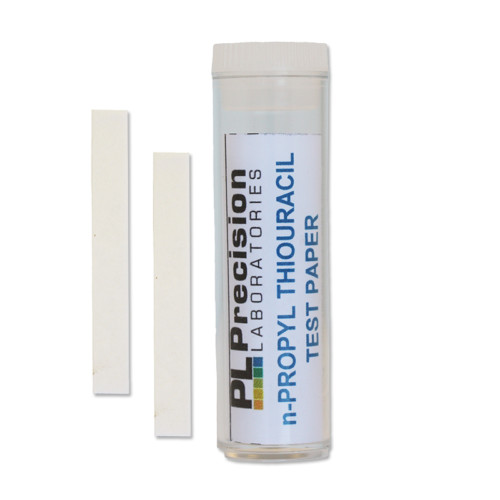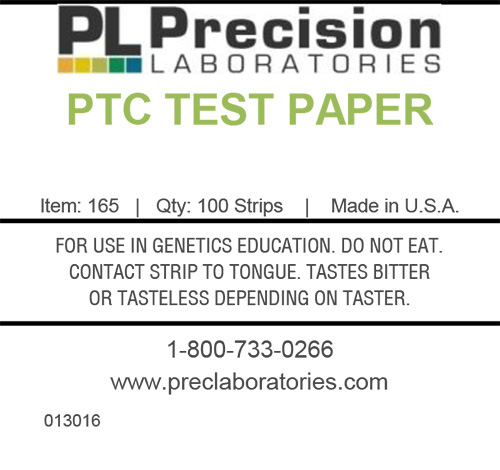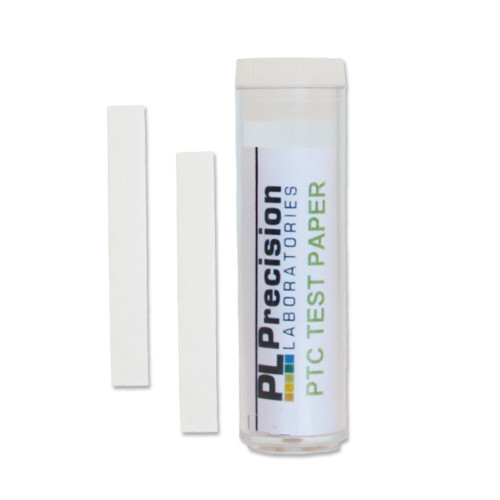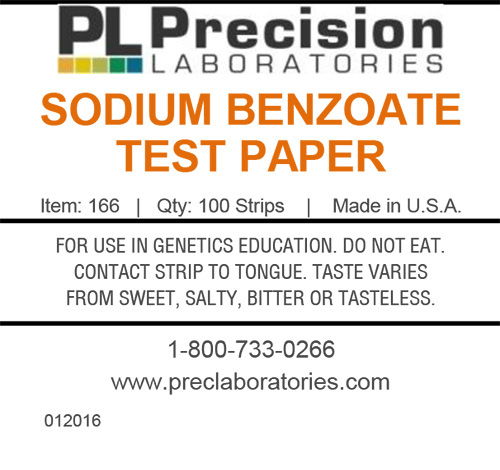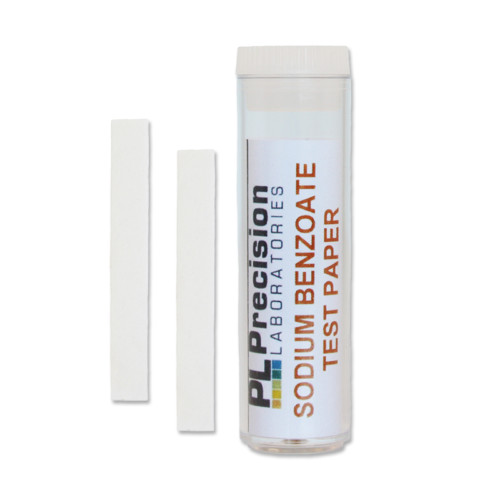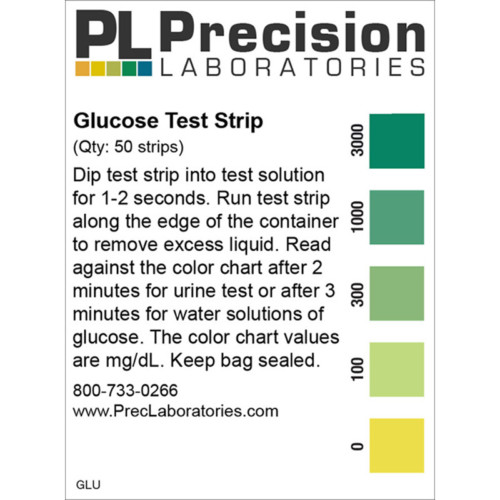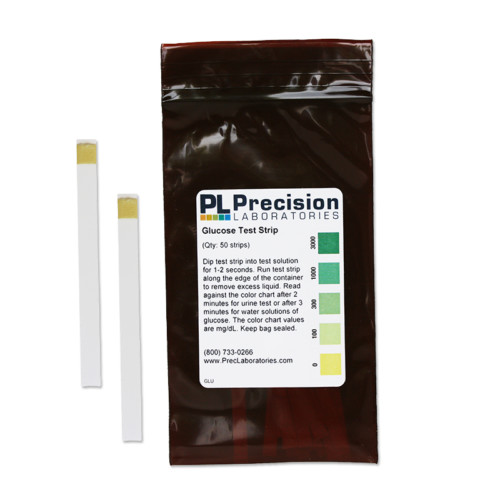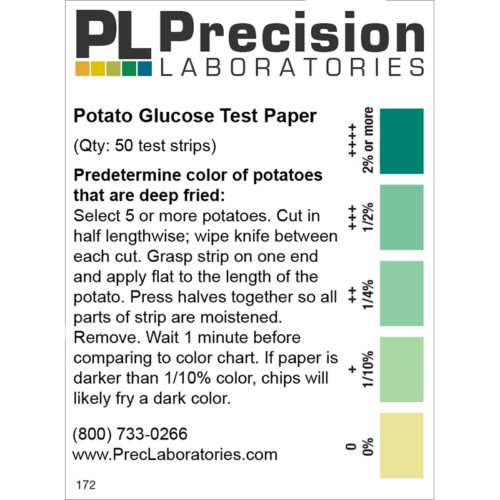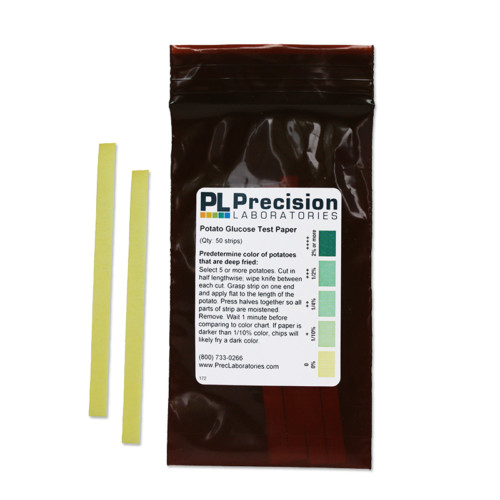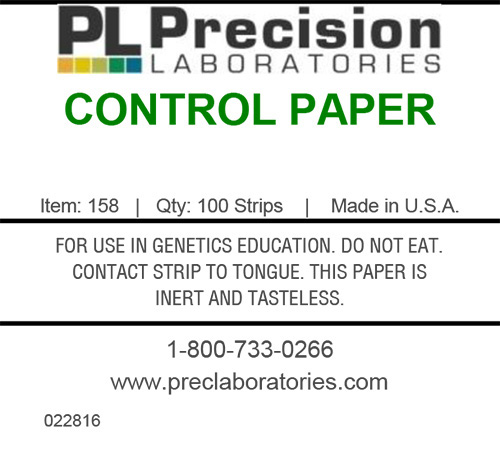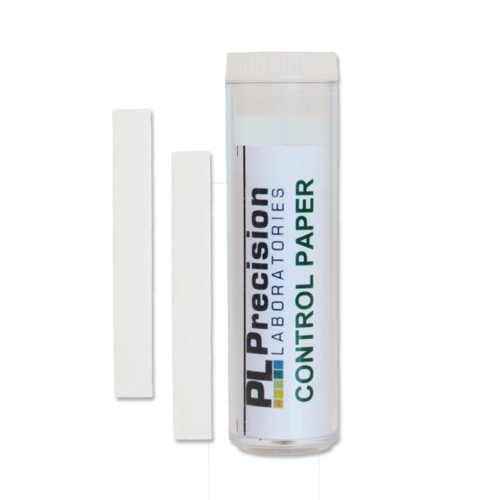The Protein test strip detects residual Protein in water in increments of 0.3, 1.0, 3.0, 10.0 plus g/L. If used to test protein in urine, the color may be more green than blue. If testing urine samples, consider using the Urine Analysis Test Strip. The Protein test strip is based on so-called “protein error of indicators”. This phenomenon relates to the fact that certain pH indicators will change the color at a different pH value in the presence of protein then in the absence of protein. The test is more sensitive to albumin than to globulins, mucoproteins, hemoglobin and Bence-Jones protein. The Protein test strip is strictly for use in education and training students in all levels of medical and clinical-biochemical educational programs. It is not for use in the medical field.
Protein Test Strip
Protein Test Strip
- Remove one Protein test strip from the vial. Do not touch the test pad with your fingers.
- Dip the test strip into the solution being tested for 1 second.
- Remove and compare to the color chart after 60 seconds.

Disclaimer: Precision Laboratories products are not approved for use as medical devices. Products and product information is for informational purposes only and not intended for use to diagnose, treat, cure or prevent any medical condition. Consult a medical doctor when needed.
PRO250; PRO; PRO-1V-50
Product Specs
| SKU: | PRO-1V-50 |
|---|---|
| Strip Quantity: | 50 strips |
| Vial Dimensions: | 1.125″ (D) x 3.375″ (H) [29mm (D) x 86mm (H)] |
| Strip Dimensions: | 2.5" (L) x .1875" (W) [64mm (L) x 5mm (W)] |
| Weight: | 0.07 lbs [33.4 g] (50-strip vial) |
| Other: | Stored in a flip-top vial with built-in desiccant liner. |
| Shelf-Life: | 2 Years |
| Label: | Customizable water-resistant label |
Product Documentation
How can I detect bacteria using Protein test strips?
Procedure:
1. Nutrient broth medium inoculated with Escherichia coli and Staphylococcus aureus and incubated at 37C for 24 hours, “starting cultures”.
2. A standard plate count procedure performed using 24 hour cultures of Escherichia coli and Staphylococcus aureus. Cultures diluted (10-1, 10-2…10-8) in 0.75% saline solution, plated on nutrient agar medium and incubated at 37C for 24 hours. The number of colony forming units (CFU’s) determined and the starting culture bacterial concentration
determined.
3. In conjunction with the dilution procedure, 0.1 ml of each diluted bacteria suspension was then applied to a standard microscope slide and allowed to air dry. A Protein test strip pressed onto the air-dried bacteria suspension was then applied to determine the presence of protein.
Results:
The Protein test strips were able to detect 1.0 x 10^6 bacteria per ml.


